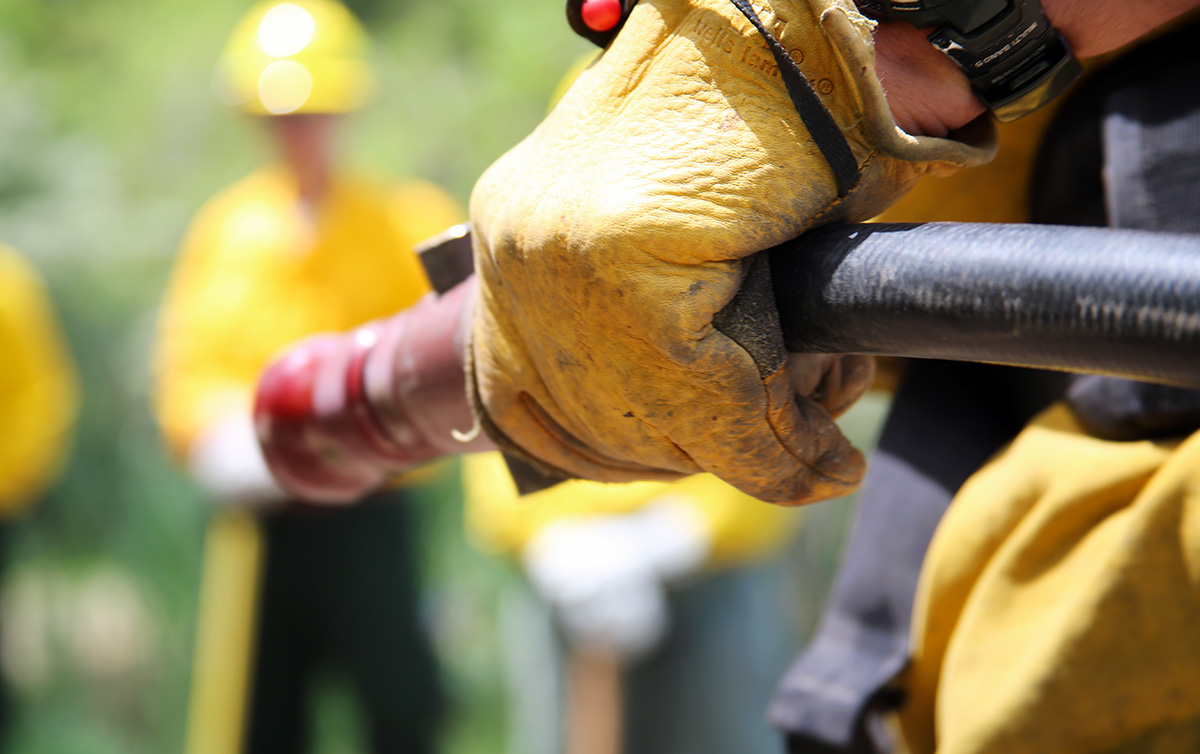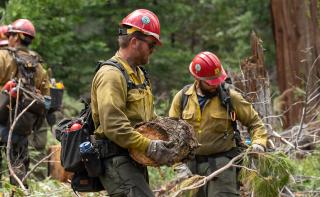
For a month in early summer 2023, firefighters, caterers, medics and other support personnel flocked to a section of California’s Highway 108 near Pinecrest, California, in the Sierra Nevada Mountains. Known locally as Little Sweden, it has served as fire camp for more than 1,000 firefighters taking up temporary residence, rotating in and out, on the Stanislaus National Forest since May 25, 2023.
But why are they pulling their iconic forest-green crew buggies and fire engines off Highway 108 to park and gather around a 16-foot-wide map board? It’s not for the meatballs! Indeed, from across the Forest Service, crews are there to lend a hand for the 4,000-acre—the size of more than 3,000 football fields— planned prescribed fire. They turn to the four separately defined burn plans unfolding around them.
At one point, Mother Nature—being a capricious caretaker of heat, rain and hail—pushed crews out of the strictly defined prescribed burn area. Firefighters turned their axes and shovels to prepping an additional 5,000 acres within a similar footprint. If all goes well, they’ll burn those acres in the fall.
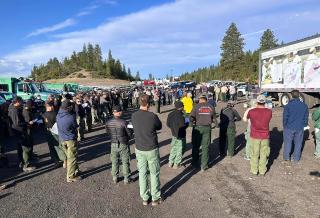
As part of the Forest Service’s Wildfire Crisis Strategy, the Stanislaus National Forest is one of 21 western landscapes identified to receive additional funding through the Infrastructure Investment and Jobs Act, and the Inflation Reduction Act. On the Stanislaus alone, these funds will help treat more than 300,000 acres over the next 10 years. Treatment methods include mastication (the mechanical shredding and chipping of small trees and shrubs), hand thinning and the reintroduction of low-intensity prescribed fire on a fire-adapted landscape—the same landscape where fire has been excluded, at all costs, over the last 100 years.
“The Sierra Nevada is a fire-dependent ecosystem,” explained Stanislaus National Forest Supervisor Jason Kuiken. “For too long we’ve excluded that fire and are now dealing with the consequences of those decisions, in the form of unhealthy forests and catastrophic wildfires.”
While the number of acres achieved is impressive, it wouldn’t be possible unless the Stanislaus National Forest piloted a prescribed burn implementation team. Unlike traditional prescribed fires, the burn taking place is guided by an incident management team with the full suite of Incident Command System support behind it. The team is piloting the Forest Service’s new Prescribed Burn Resource Mobilization Strategy that looks to remove the obstacles for national forest units performing prescribed fire operations.
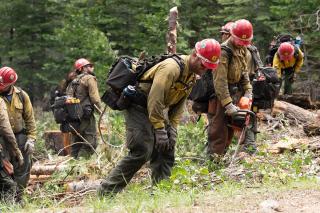
“What we’ve essentially been tasked to do is revamp the system,” said Incident Commander Shaun Craig. Craig normally serves as the Summit/Mi-Wok District fire management officer and assumed the position of Type 3 incident commander for the project. “If we are to operate at the pace and scale needed to address the wildfire crisis across the West, we must find a way to work through institutional barriers, past policy and procedures that hinder us from doing this work.”
With the National Incident Management Organization team, Craig and his management team identified roadblocks and adjusted accordingly or found ways to change, modify or further evaluate current policy by working with the Forest Service’s Washington Office.
“We’ve been asked to chart a new path forward for how we get this work done,” Kuiken said. “And that’s what we’ve accomplished. I couldn’t be prouder of all the folks who came together. We’re not just talking firefighters here – the incident management team, resource specialists, the incident weather folks, the air quality advisors who helped us with smoke messaging, public information officers and many others - this was truly a whole team effort.”
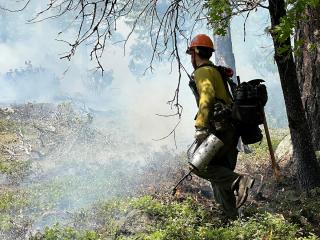
Kuiken noted he is especially proud of the work done around the community of Strawberry, California, where fire professionals brought fire near to some residents’ backyards.
“We couldn’t do this work without first having laid a groundwork of trust with these communities. We talked to the residents, we talked to their fire professionals, we brought them out to tour the burn units and showed them how we’re doing this work,” Craig said.
That foundation of trust paid dividends when members of the Strawberry Volunteer Fire Department drove their engines along the town’s backroads in a show of support. They even stopped to answer questions from locals, sharing what they learned.

And while the burn window may have closed due to increasing temperatures in this area, Craig looks to the 5,000 acres prepped.
“What we’ve been able to accomplish in just three weeks would have taken the staff on my district nearly ten years to accomplish,” said Craig. “So, when the fall burn window comes around, we’ll be able to go out there and get to work almost immediately. That’s seriously exciting.”





